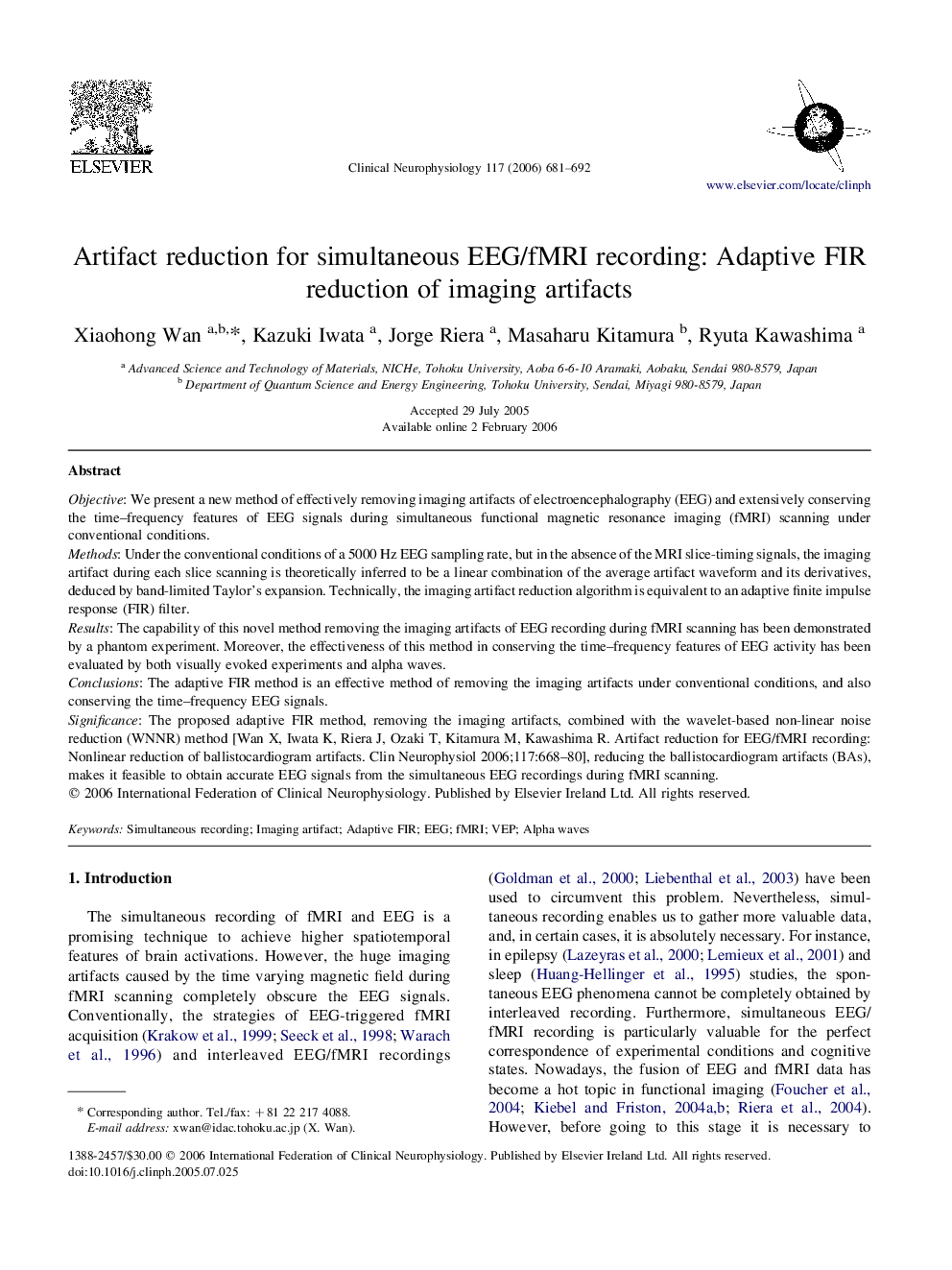| Article ID | Journal | Published Year | Pages | File Type |
|---|---|---|---|---|
| 3048439 | Clinical Neurophysiology | 2006 | 12 Pages |
ObjectiveWe present a new method of effectively removing imaging artifacts of electroencephalography (EEG) and extensively conserving the time–frequency features of EEG signals during simultaneous functional magnetic resonance imaging (fMRI) scanning under conventional conditions.MethodsUnder the conventional conditions of a 5000 Hz EEG sampling rate, but in the absence of the MRI slice-timing signals, the imaging artifact during each slice scanning is theoretically inferred to be a linear combination of the average artifact waveform and its derivatives, deduced by band-limited Taylor's expansion. Technically, the imaging artifact reduction algorithm is equivalent to an adaptive finite impulse response (FIR) filter.ResultsThe capability of this novel method removing the imaging artifacts of EEG recording during fMRI scanning has been demonstrated by a phantom experiment. Moreover, the effectiveness of this method in conserving the time–frequency features of EEG activity has been evaluated by both visually evoked experiments and alpha waves.ConclusionsThe adaptive FIR method is an effective method of removing the imaging artifacts under conventional conditions, and also conserving the time–frequency EEG signals.SignificanceThe proposed adaptive FIR method, removing the imaging artifacts, combined with the wavelet-based non-linear noise reduction (WNNR) method [Wan X, Iwata K, Riera J, Ozaki T, Kitamura M, Kawashima R. Artifact reduction for EEG/fMRI recording: Nonlinear reduction of ballistocardiogram artifacts. Clin Neurophysiol 2006;117:668–80], reducing the ballistocardiogram artifacts (BAs), makes it feasible to obtain accurate EEG signals from the simultaneous EEG recordings during fMRI scanning.
